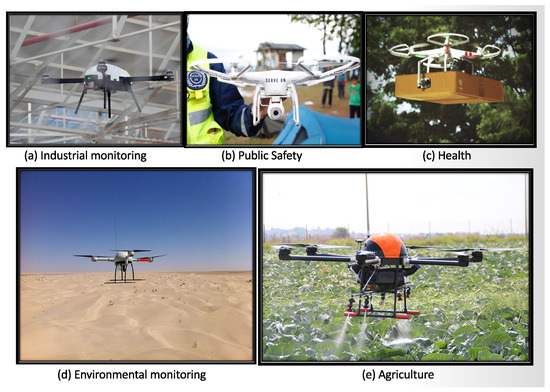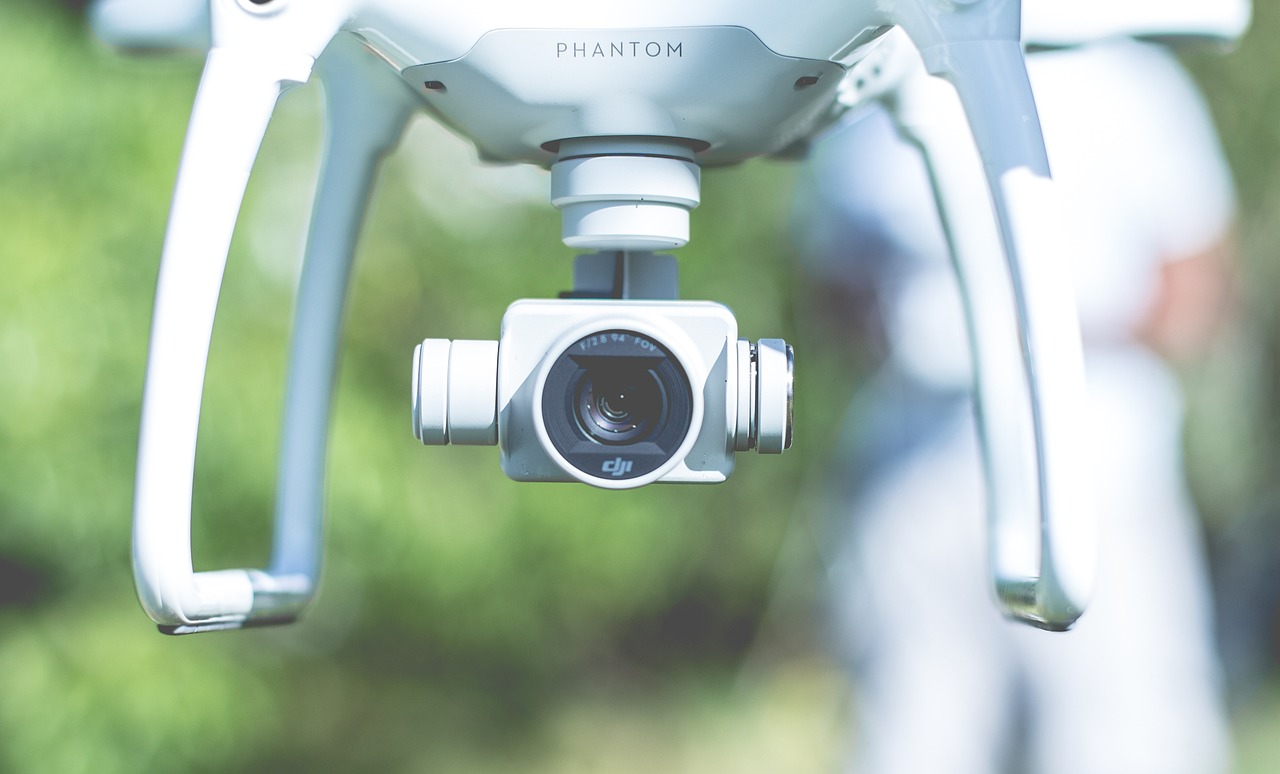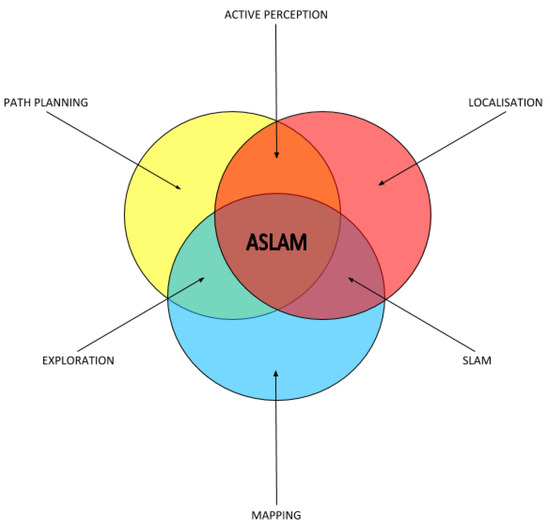Introduction
China’s innovation in unmanned aerial systems (UAS), commonly known as drones, has garnered global attention and acclaim. From military applications to commercial endeavors and even recreational use, Chinese drones have made a significant impact on various industries. This article delves into China’s pioneering achievements in UAS technology, exploring its history, applications, and the future of drone innovation.
China’s innovation in unmanned aerial systems (UAS), commonly known as drones, has become a source of admiration and inspiration for industries worldwide. These aerial wonders have transcended their origins in military applications to become transformative tools in an array of sectors, including commercial ventures and even recreational hobbies. As we embark on an exploration of China’s trailblazing journey through the realm of UAS technology, we are greeted not only by a rich history but also a future filled with endless possibilities and groundbreaking innovation.
A Glimpse into the Past: The Evolution of Chinese Drones
China’s ascent in drone technology is a testament to relentless determination and strategic investment. The nation started by importing drone technology and then swiftly adapted and enhanced it to meet its unique requirements. This commitment to indigenous drone development has made China a prominent global player in the field.
Military Prowess: The Crown Jewel of Chinese Drones
Chinese military drones, including the highly acclaimed CH-4 and Wing Loong series, have captured the world’s attention for their exceptional performance and cost-effectiveness. These UAS have taken on diverse roles, from reconnaissance and surveillance to being active participants in combat missions. China’s military drone capabilities have not only bolstered its defense systems but have also reshaped the global landscape of military technology.
Unleashing Commercial Potential: Drones for Everyday Use
China’s innovative spirit extends far beyond military applications. Drones have found their way into countless commercial sectors, each reaping the benefits of this advanced technology. Aerial photography and videography, precision agriculture, environmental monitoring, and infrastructure inspection are just a few examples of industries transformed by Chinese drones. These aerial marvels, equipped with state-of-the-art cameras and sensors, provide invaluable data for decision-making, resource management, and enhancing efficiency.
Revolutionizing Delivery Services: Drones Take Flight
China’s thriving e-commerce industry has taken an ambitious leap into the future with drone technology. Leading companies like JD.com and Alibaba’s Cainiao have conducted groundbreaking drone delivery trials, with a particular focus on reaching remote and underserved areas. These endeavors aim to expedite delivery times, cut operational costs, and pave the way for a new era of delivery services.
Heroes in Times of Crisis: Drones in Disaster Response
Drones have emerged as unsung heroes in disaster response and relief efforts. Equipped with thermal imaging, search-and-rescue capabilities, and remote sensing technology, drones are deployed swiftly to locate survivors, assess damage, and gather crucial data. Their agility and versatility make them indispensable tools in the face of natural calamities.
Fueling Innovation: The Core of Chinese Drone Advancements
China’s impressive strides in drone technology are characterized by groundbreaking innovations:
Autonomous Excellence: Chinese drones excel in autonomous flight capabilities, including obstacle avoidance, waypoint navigation, and precise autonomous landings. These features redefine safety standards and reliability.
Harnessing AI and Machine Learning: AI-powered drones can perform intricate tasks, such as object recognition, real-time data analysis, and adaptability in dynamic environments.
Mastering Swarm Technology: China has emerged as a frontrunner in swarm technology, enabling multiple drones to collaborate seamlessly. This technological marvel has far-reaching implications, from enhanced surveillance to precision agriculture.
Unrivaled Range and Endurance: Chinese UAS boast impressive flight ranges and endurance, rendering them suitable for missions that demand extensive coverage and prolonged operation.
Charting the Future: What Lies Ahead for Chinese Drones
While the present showcases China’s prowess in UAS technology, the future holds a promise of even greater innovation. The collaborative efforts between the government, private sector, and academic institutions are poised to catapult China’s drone capabilities to new heights. These endeavors will not only strengthen China’s leadership in drone innovation but will also significantly influence industries ranging from agriculture and transportation to healthcare and environmental conservation.
In conclusion, China’s relentless innovation in unmanned aerial systems has catapulted the nation to the forefront of the global drone industry. These versatile aerial wonders have transformed the world’s perception of what is possible, redefining the realms of military, commercial, and humanitarian applications. As the journey continues, Chinese drones are poised to shape industries, foster automation, and capture imaginations on a global scale.
If you’d like to dive deeper into this subject, there’s more to discover on this page: Unmanned aerial vehicles (UAVs): practical aspects, applications …
China’s journey in drone technology began modestly but accelerated rapidly. The country initially imported drone technology and adapted it for its specific needs. Over the years, China has invested heavily in research and development, propelling its UAS capabilities to the forefront of the global stage.
Today, China stands as a global leader in the drone industry. Its innovative drone manufacturers produce a wide range of unmanned aircraft systems, from consumer drones to industrial-grade solutions. These drones are used in various sectors, including agriculture, construction, surveillance, and even e-commerce deliveries. China’s expertise in drone technology continues to evolve, promising exciting advancements in the field.
Looking for more insights? You’ll find them right here in our extended coverage: Exploring consumers’ environmental ethical preferences in the …

Chinese military drones, such as the CH-4 and Wing Loong series, have gained international recognition for their performance and affordability. These UAS are deployed for reconnaissance, surveillance, and even combat missions. Their success has elevated China’s status as a significant player in the global defense industry.
“China’s advancements in military drone technology are not only boosting its defense capabilities but also opening up opportunities for international collaboration and export. As China continues to innovate and improve its UAS technology, its influence in the global defense market is expected to grow.”
Looking for more insights? You’ll find them right here in our extended coverage: China’s Military Employment of Artificial Intelligence and Its Security …

China has harnessed drone technology for a wide range of commercial applications. Aerial photography and videography, agriculture, environmental monitoring, and infrastructure inspection are just a few sectors benefiting from UAS technology. Drones equipped with high-resolution cameras and sensors provide valuable data for decision-making and resource management.
China’s utilization of drone technology has opened up a world of possibilities across a diverse range of commercial sectors. These Unmanned Aerial Systems (UAS) have proven to be invaluable tools, offering innovative solutions to various challenges while contributing to increased efficiency, data-driven decision-making, and sustainable resource management. Here, we explore some of the prominent applications of drones in China’s commercial landscape:
1. Aerial Photography and Videography:
Drones have revolutionized the field of aerial photography and videography. They offer filmmakers, photographers, and content creators a unique perspective and the ability to capture stunning visuals that were once logistically challenging or cost-prohibitive. Drones have become indispensable in the media and entertainment industry, delivering breathtaking aerial shots for movies, documentaries, and marketing campaigns.
2. Agriculture:
China’s vast agricultural landscape benefits significantly from drone technology. Drones equipped with multispectral cameras and infrared sensors can monitor crop health, detect diseases, and optimize irrigation. They provide farmers with real-time data and actionable insights, ultimately enhancing crop yields and resource efficiency.
3. Environmental Monitoring:
Drones are playing a crucial role in environmental conservation and monitoring efforts. They are used to survey remote and sensitive ecosystems, track wildlife populations, and assess the impact of climate change. By collecting high-resolution data and images, drones aid researchers and conservationists in making informed decisions to protect China’s diverse natural habitats.
4. Infrastructure Inspection:
In the realm of infrastructure maintenance and inspection, drones have proven to be cost-effective and safe alternatives to traditional methods. They can access hard-to-reach or hazardous areas, such as bridges, power lines, and oil rigs, without exposing workers to unnecessary risks. Drones equipped with high-resolution cameras and thermal imaging sensors can identify structural issues and defects with precision.
5. Disaster Response:
Drones are invaluable tools in disaster management and response. They can quickly assess the extent of natural disasters like earthquakes, floods, and wildfires, providing first responders and relief agencies with real-time information on affected areas. Drones are instrumental in search and rescue operations, delivering supplies, and assessing damage, ultimately saving lives and resources.
6. Resource Management:
Drones contribute significantly to sustainable resource management. In sectors like forestry and mining, drones can accurately measure and monitor resource extraction, track deforestation, and assess the impact of mining activities on the environment. This data-driven approach ensures responsible resource utilization.
7. Smart Cities:
Drones are integral to the development of smart cities in China. They are used for traffic management, urban planning, and monitoring of critical infrastructure. By collecting data on traffic flow, air quality, and public safety, drones assist city planners in creating more efficient and livable urban environments.
In conclusion, China’s utilization of drone technology across various commercial sectors exemplifies its commitment to innovation and sustainability. Drones equipped with advanced sensors and cameras provide valuable data for decision-making, resource management, and enhancing the overall quality of life. As technology continues to evolve, the applications of drones are likely to expand further, contributing to a more efficient, informed, and sustainable future for China and the world.
Don’t stop here; you can continue your exploration by following this link for more details: Managing the drone revolution: A systematic literature review into …

China’s thriving e-commerce sector has embraced drone technology for last-mile delivery. Companies like JD.com and Alibaba’s Cainiao have conducted successful drone delivery trials, especially in remote and rural areas. These efforts aim to increase delivery speed and efficiency while reducing costs.
The utilization of drone technology in China’s e-commerce industry is not just about convenience; it’s also environmentally friendly. As these drones take to the skies, they help reduce carbon emissions and contribute to a greener future. In urban areas, where traffic congestion can be a significant challenge, drones offer a creative solution to expedite deliveries. By harnessing the power of technology, China’s e-commerce giants are not only meeting consumer demands for faster shipping but also contributing to a more sustainable and efficient logistics landscape.
Looking for more insights? You’ll find them right here in our extended coverage: Managing the drone revolution: A systematic literature review into …

UAS have played a vital role in disaster response and relief efforts. Drones equipped with thermal imaging and search-and-rescue capabilities can quickly locate survivors and assess the extent of damage after natural disasters. This technology has proven invaluable in emergency situations.
In addition to disaster response, UAS technology has applications in various fields such as agriculture, environmental monitoring, and infrastructure inspection. These versatile drones can capture high-resolution images and collect data in real-time, allowing for more efficient and cost-effective operations across numerous industries.
Don’t stop here; you can continue your exploration by following this link for more details: Applications of drone in disaster management: A scoping review …

China’s advancements in drone technology are marked by innovations in:
China’s advancements in drone technology are marked by innovations in several key areas that are shaping the future of unmanned aerial systems:
1. Autonomy and AI: Chinese engineers are at the forefront of developing autonomous drones equipped with advanced artificial intelligence (AI). These drones can perform complex tasks, such as autonomous flight, obstacle avoidance, and even decision-making based on real-time data. This innovation not only enhances drone safety but also expands their potential applications, from agriculture to delivery services.
2. High-Precision Mapping: China’s drone industry has made significant strides in high-precision mapping and surveying. Drones equipped with LiDAR (Light Detection and Ranging) technology and high-resolution cameras are being used for topographic mapping, urban planning, and environmental monitoring. These applications are instrumental in infrastructure development and disaster management.
3. Agricultural Automation: Drones have become indispensable tools in China’s agriculture sector. They are used for crop monitoring, pest control, and precision agriculture. With the ability to collect data on soil conditions and crop health, drones are optimizing farming practices, increasing yields, and reducing the need for pesticides and fertilizers.
4. Drone Swarming: China is pioneering the development of drone swarms, where multiple drones operate collaboratively in a coordinated manner. These swarms are being explored for applications ranging from aerial light shows to military operations. The ability to deploy large numbers of drones simultaneously has opened up new possibilities in various domains.
5. Urban Air Mobility: Chinese companies are actively pursuing the development of urban air mobility solutions using drones and eVTOL (electric vertical takeoff and landing) aircraft. These innovations could revolutionize transportation in congested urban areas, offering a new dimension to commuting and logistics.
6. Environmental Monitoring: Drones are playing a vital role in environmental conservation efforts. They are used to monitor wildlife, combat poaching, and assess the health of ecosystems. China’s commitment to protecting its natural resources is reflected in the creative use of drones for conservation.
7. Delivery Services: Chinese companies are pushing the boundaries of drone delivery services, offering fast and efficient parcel delivery in urban and rural areas. This application has the potential to transform logistics, especially in remote regions.
8. Defense and Security: China’s drone technology extends to the defense sector, with developments in military drones for surveillance, reconnaissance, and combat. These innovations are a reflection of China’s commitment to modernizing its armed forces.
China’s remarkable progress in drone technology is not only a testament to its technological prowess but also an illustration of how drones are becoming integral to various aspects of modern life. These innovations are setting the stage for a future where drones will play a pivotal role in industries ranging from agriculture and environmental protection to transportation and national security.
Looking for more insights? You’ll find them right here in our extended coverage: Land | Free Full-Text | Exploring the Challenges Posed by …

Chinese drones feature advanced autonomous flight capabilities, including obstacle avoidance, waypoint navigation, and autonomous landing. These features enhance safety and reliability.
Chinese drone technology has not only made significant advancements in autonomous flight but also in payload capacity. Today, Chinese drones are capable of carrying out various missions, from aerial photography and videography to surveying and even agricultural applications. With ever-evolving capabilities and competitive pricing, they have become a staple in industries worldwide, offering versatility and efficiency for a wide range of tasks. Whether it’s monitoring crop health, inspecting infrastructure, or capturing breathtaking aerial footage, Chinese drones have established themselves as reliable and accessible tools for professionals and enthusiasts alike.
If you’d like to dive deeper into this subject, there’s more to discover on this page: Current trends in the development of intelligent unmanned …
AI-powered drones can perform complex tasks, such as recognizing objects and terrain, analyzing data in real-time, and adapting to changing conditions.
AI-powered drones are revolutionizing various industries with their unparalleled capabilities. From agriculture and environmental monitoring to search and rescue missions, these advanced aerial systems are capable of performing tasks that were once considered challenging or impossible for traditional drones. Their ability to recognize objects and terrain, process data in real-time, and adapt to changing conditions makes them invaluable tools in today’s rapidly evolving technological landscape. Whether it’s increasing agricultural yields, enhancing disaster response efforts, or providing critical surveillance, AI-powered drones are at the forefront of innovation, unlocking new possibilities and reshaping the way we interact with the world.
To expand your knowledge on this subject, make sure to read on at this location: The next frontier for AI in China | McKinsey

China has made strides in swarm technology, enabling multiple drones to collaborate and perform tasks simultaneously. This has applications in surveillance, agriculture, and environmental monitoring.
China’s remarkable progress in swarm technology represents a significant leap forward in the world of robotics and automation. Swarm technology, inspired by the collective behavior of organisms like birds and insects, allows multiple drones to work together seamlessly, opening up a world of possibilities across various sectors.
In the realm of surveillance, China’s advancements in swarm technology have revolutionized security and defense. Swarms of drones can be deployed to monitor vast areas, providing real-time, comprehensive surveillance. Whether it’s tracking suspicious activities along borders or ensuring the safety of critical infrastructure, these coordinated drones are invaluable assets. Their ability to cover large territories efficiently and respond to emerging threats swiftly enhances national security.
Agriculture is another domain where swarm technology is driving innovation. In a country with a massive agricultural sector, the application of drone swarms has the potential to transform farming practices. These swarms can perform tasks such as crop monitoring, precision spraying of fertilizers and pesticides, and even pollination. By automating these processes, China aims to boost agricultural productivity, reduce the reliance on manual labor, and contribute to food security.
Furthermore, environmental monitoring benefits immensely from swarm technology. China’s commitment to environmental conservation is well-documented, and drone swarms offer a powerful tool for assessing and addressing environmental challenges. Swarms equipped with various sensors can collect data on air quality, water pollution, and wildlife populations. This data is crucial for informed decision-making and proactive measures to protect the environment.
Beyond these applications, the future outlook for swarm technology in China is promising. Researchers and engineers continue to explore new frontiers, from disaster response and search-and-rescue operations to delivery services and infrastructure maintenance. The ability of drones to work together efficiently in complex and dynamic environments opens up endless possibilities for innovation and problem-solving.
However, as with any transformative technology, challenges remain. Ensuring the safe and responsible use of drone swarms, addressing regulatory and privacy concerns, and managing the potential impact on employment in sectors like agriculture are important considerations.
In conclusion, China’s pioneering efforts in swarm technology are reshaping industries and revolutionizing the way we approach various tasks. As the technology continues to evolve, it holds the potential to not only enhance efficiency and productivity but also address critical societal and environmental challenges, making China a leader in the exciting frontier of autonomous drone swarms.
Explore this link for a more extensive examination of the topic: Towards the Unmanned Aerial Vehicles (UAVs): A Comprehensive …

Chinese UAS have achieved impressive flight ranges and endurance, making them suitable for missions that require extensive coverage and duration.
Chinese Unmanned Aircraft Systems (UAS), often referred to as drones, have undergone significant advancements in terms of flight range and endurance. These technological improvements have expanded their capabilities and made them well-suited for various missions that demand extensive coverage and extended operational durations. This includes applications in sectors such as agriculture, surveillance, environmental monitoring, and even delivery services.
The extended flight range of Chinese UAS allows them to cover larger areas and reach remote or inaccessible locations, which can be particularly valuable for tasks like crop monitoring in vast agricultural fields or conducting aerial surveys of challenging terrains.
Moreover, the improved endurance of these UAS ensures that they can stay airborne for longer periods. This is beneficial for missions that require prolonged monitoring, such as wildlife observation, disaster response, or infrastructure inspection. With longer flight durations, Chinese UAS can gather more data and provide a more comprehensive view of the situation.
Overall, the enhanced flight range and endurance of Chinese UAS contribute to their versatility and effectiveness across a wide range of applications, positioning them as valuable tools in various industries and sectors. As technology continues to advance, we can expect even more impressive capabilities from these unmanned systems, further expanding their potential applications and impact.
For additional details, consider exploring the related content available here Killing Me Softly: Competition in Artificial Intelligence and …

Despite its remarkable progress, China’s drone industry faces challenges related to privacy concerns, safety regulations, and airspace management. To address these issues, China has been working on developing a comprehensive regulatory framework to ensure responsible drone usage.
“In addition to its remarkable progress, China’s drone industry faces challenges related to privacy concerns, safety regulations, and airspace management. To address these issues, China has been working on developing a comprehensive regulatory framework that includes strict safety measures and guidelines for responsible drone usage. This initiative aims to strike a balance between fostering innovation and ensuring public safety.”
For a comprehensive look at this subject, we invite you to read more on this dedicated page: Civil and military drones – Navigating a disruptive and dynamic …

China’s innovation in unmanned aerial systems is poised to have a lasting global impact. As drone technology continues to evolve, China’s expertise in UAS development will influence industries ranging from agriculture and transportation to healthcare and environmental conservation. The collaboration between government, industry, and academia will likely propel China’s UAS capabilities even further, positioning the country as a leader in drone innovation for years to come.
China’s innovation in unmanned aerial systems (UAS) is not just a regional phenomenon; it’s poised to have a lasting global impact. The remarkable strides made in drone technology have positioned China as a pivotal player on the world stage, and the ripple effects of its advancements are already felt across various industries. As we peer into the horizon of drone technology, it becomes evident that China’s expertise in UAS development will act as a guiding star for sectors far and wide, ushering in an era of transformative change and unparalleled possibilities.
Agriculture: Cultivating the Future with Drones
One of the most promising arenas where Chinese drone innovation is set to make an enduring mark is agriculture. UAS equipped with advanced sensors and imaging technology are revolutionizing farming practices. Drones can monitor crop health, identify pest infestations, and optimize irrigation, ultimately increasing yields while reducing resource consumption. China’s expertise in this field is likely to contribute significantly to global food security and sustainable agriculture practices.
Transportation: Pioneering Skyways for Efficiency
The transportation sector is another beneficiary of China’s prowess in UAS technology. Drones have the potential to transform logistics, from cargo delivery to urban air mobility. In congested megacities, drones can provide swift and efficient last-mile delivery services, alleviating traffic congestion and reducing emissions. Collaborations between Chinese drone manufacturers and transportation giants worldwide are already shaping the future of transportation.
Healthcare: Aerial Solutions for Better Well-Being
China’s innovation in UAS is poised to revolutionize healthcare. Drones equipped with medical supplies can provide rapid response during emergencies, delivering vital equipment and medication to remote or disaster-stricken areas. Moreover, aerial medical transport can significantly reduce transportation times for critical patients, potentially saving lives. As healthcare systems globally recognize the value of drone technology, China’s leadership in this sector is set to be a beacon of hope and innovation.
Environmental Conservation: Guardians of the Natural World
Drones are becoming invaluable tools in environmental conservation efforts. They can monitor wildlife populations, track deforestation, and assess the impact of climate change on ecosystems. China’s expertise in UAS development is instrumental in addressing environmental challenges on a global scale, safeguarding precious natural resources and biodiversity.
Collaboration: The Driving Force of Progress
China’s journey to the forefront of UAS technology has been marked by a harmonious collaboration between government entities, industry players, and academic institutions. This collaboration is poised to propel China’s UAS capabilities even further. As stakeholders work in unison to tackle complex challenges, share knowledge, and foster innovation, China’s leadership in drone technology will continue to ascend to new heights.
International Cooperation: Forging Global Partnerships
China’s influence in the UAS arena extends beyond its borders. The nation actively engages in international partnerships and collaborations, sharing expertise and resources. These efforts foster a global community of drone innovators, facilitating the cross-pollination of ideas and technologies. As a result, China is not only a leader in drone innovation but also a catalyst for a collaborative global drone ecosystem.
In summation, China’s innovation in unmanned aerial systems transcends geographical boundaries, propelling the nation into a position of global leadership. The enduring impact of Chinese drone technology will reverberate across agriculture, transportation, healthcare, and environmental conservation. With a commitment to collaboration and a vision for a better, more efficient world, China is poised to guide drone innovation for years to come, fostering progress and transformation in industries and sectors that touch every corner of the globe.
Explore this link for a more extensive examination of the topic: Land | Free Full-Text | Exploring the Challenges Posed by …

Conclusion
In conclusion, China’s innovation in unmanned aerial systems represents a remarkable journey from adaptation to leadership in UAS technology. With diverse applications spanning defense, commerce, disaster response, and more, Chinese drones are poised to reshape industries and contribute to advancements in automation and data acquisition worldwide.
China’s ascent to the forefront of UAS technology demonstrates the nation’s commitment to innovation and its ability to adapt and excel in rapidly evolving industries. As Chinese drone manufacturers continue to push boundaries and explore new applications, we can anticipate groundbreaking developments that will shape the future of automation, surveillance, and data-driven decision-making on a global scale. China’s UAS capabilities are indeed a testament to the power of innovation and technology in the modern world.
To expand your knowledge on this subject, make sure to read on at this location: Exploring consumers’ environmental ethical preferences in the …
More links
Additionally, you can find further information on this topic by visiting this page: Rising Demand and Proliferating Supply of Military UAS
